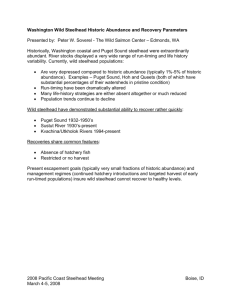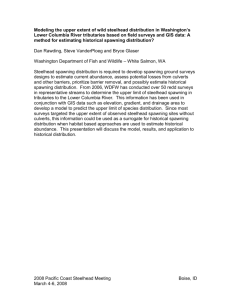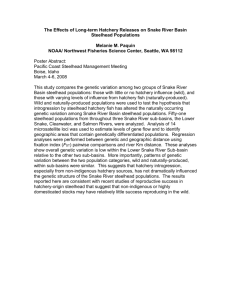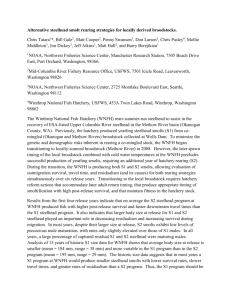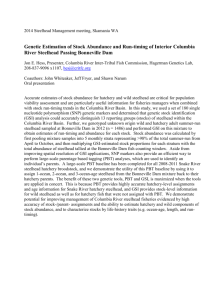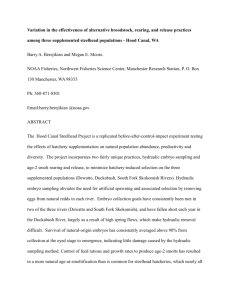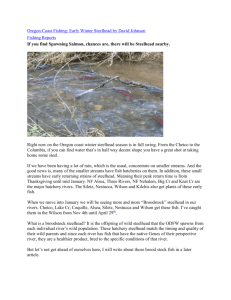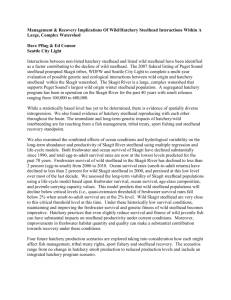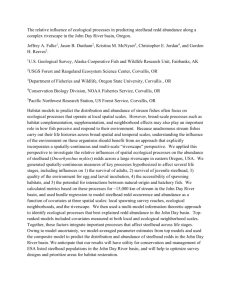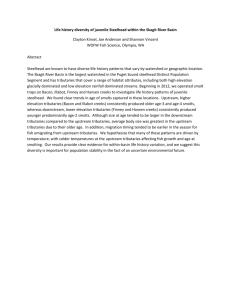Session Name: Steelhead Presentation Title: Klickitat River
advertisement
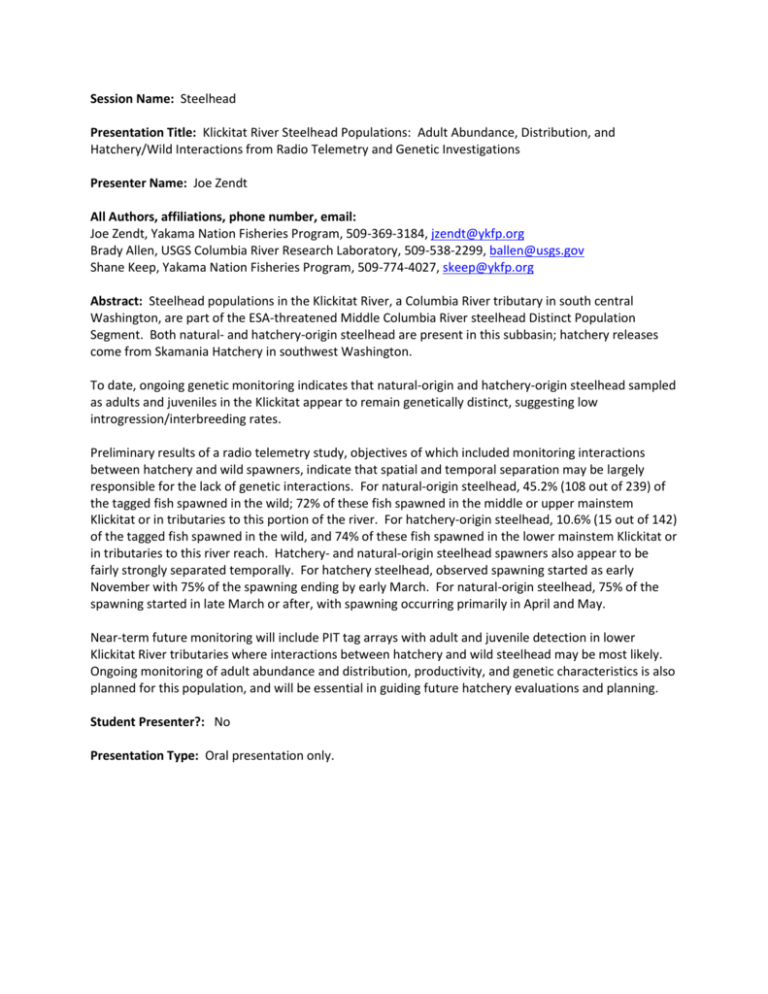
Session Name: Steelhead Presentation Title: Klickitat River Steelhead Populations: Adult Abundance, Distribution, and Hatchery/Wild Interactions from Radio Telemetry and Genetic Investigations Presenter Name: Joe Zendt All Authors, affiliations, phone number, email: Joe Zendt, Yakama Nation Fisheries Program, 509-369-3184, jzendt@ykfp.org Brady Allen, USGS Columbia River Research Laboratory, 509-538-2299, ballen@usgs.gov Shane Keep, Yakama Nation Fisheries Program, 509-774-4027, skeep@ykfp.org Abstract: Steelhead populations in the Klickitat River, a Columbia River tributary in south central Washington, are part of the ESA-threatened Middle Columbia River steelhead Distinct Population Segment. Both natural- and hatchery-origin steelhead are present in this subbasin; hatchery releases come from Skamania Hatchery in southwest Washington. To date, ongoing genetic monitoring indicates that natural-origin and hatchery-origin steelhead sampled as adults and juveniles in the Klickitat appear to remain genetically distinct, suggesting low introgression/interbreeding rates. Preliminary results of a radio telemetry study, objectives of which included monitoring interactions between hatchery and wild spawners, indicate that spatial and temporal separation may be largely responsible for the lack of genetic interactions. For natural-origin steelhead, 45.2% (108 out of 239) of the tagged fish spawned in the wild; 72% of these fish spawned in the middle or upper mainstem Klickitat or in tributaries to this portion of the river. For hatchery-origin steelhead, 10.6% (15 out of 142) of the tagged fish spawned in the wild, and 74% of these fish spawned in the lower mainstem Klickitat or in tributaries to this river reach. Hatchery- and natural-origin steelhead spawners also appear to be fairly strongly separated temporally. For hatchery steelhead, observed spawning started as early November with 75% of the spawning ending by early March. For natural-origin steelhead, 75% of the spawning started in late March or after, with spawning occurring primarily in April and May. Near-term future monitoring will include PIT tag arrays with adult and juvenile detection in lower Klickitat River tributaries where interactions between hatchery and wild steelhead may be most likely. Ongoing monitoring of adult abundance and distribution, productivity, and genetic characteristics is also planned for this population, and will be essential in guiding future hatchery evaluations and planning. Student Presenter?: No Presentation Type: Oral presentation only.
